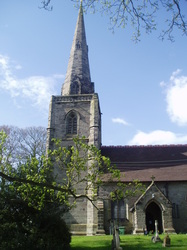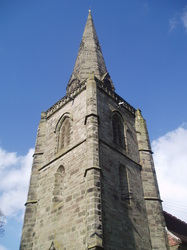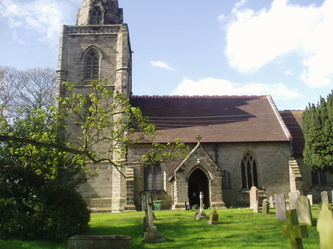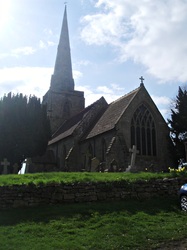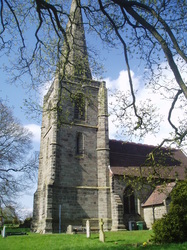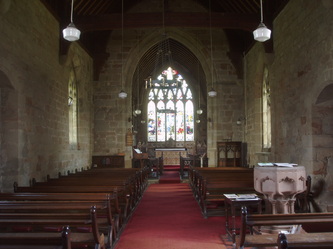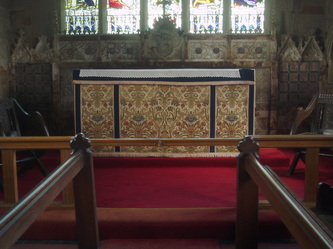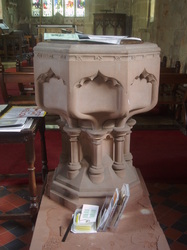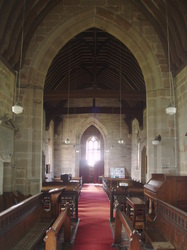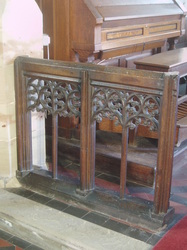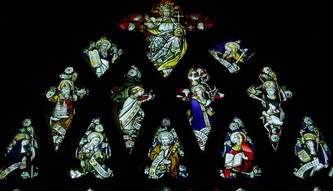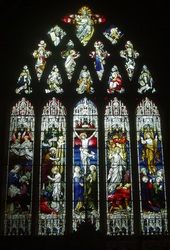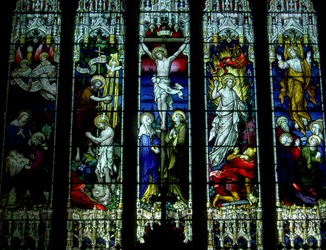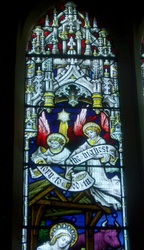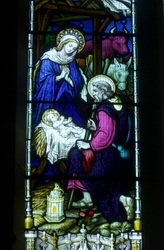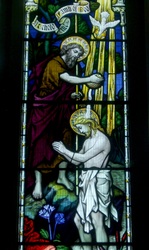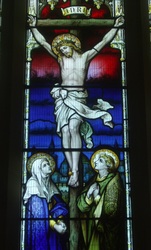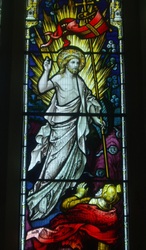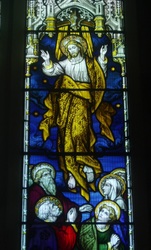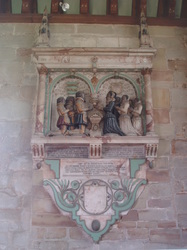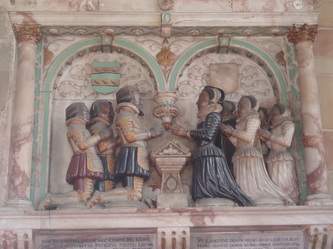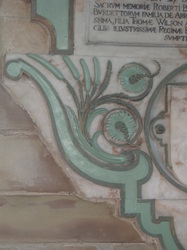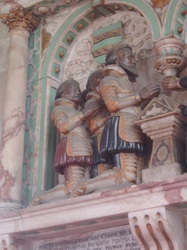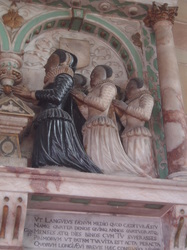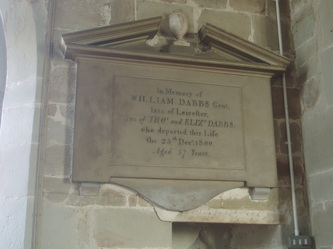Seckington - All Saints
This was the final of the normally locked cluster of churches in Warwickshire's northernmost tip that I needed to tick off, and a good one to finish on, happily still open and unmanned. It is an impressive sight, most of the building dates from the 13th and 14th centuries, but doubtless there were earlier buildings on the site, for it is recorded that King Ethelbald was murdered here by Saxon nobles in 757.
It isn't a large building and is very similar in overall form to neighbouring St Mary's at Newton Regis where I'd just come from, giving more a few senses of deja vu in it's design and layout; It has a similarly stately west tower and spire followed by nave and chancel as two long chambers without aisles, only here without any clerestorey. I struggled to get decent external views here, with the church somewhat hemmed in by foliage and private properties.
It isn't a large building and is very similar in overall form to neighbouring St Mary's at Newton Regis where I'd just come from, giving more a few senses of deja vu in it's design and layout; It has a similarly stately west tower and spire followed by nave and chancel as two long chambers without aisles, only here without any clerestorey. I struggled to get decent external views here, with the church somewhat hemmed in by foliage and private properties.
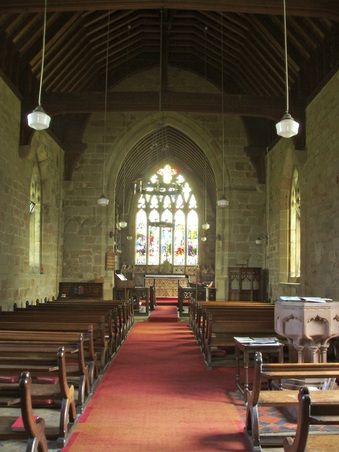
The interior focuses on a similarly large five-light east window as at Newton Regis, but here it is filled with rich stained glass, and the lighting generally is more subdued. Of the original medieval glazing a few good medieval fragments survive in the traceries of the nave windows, later 14th century in date with yellow stained foliage, birds and lion faces
There is a curious cutting forming the shape of three pointed arches to the left of the chancel arch, doubtless the ghost of the former rood loft and screen, whose lowest dado-level section seems to have survived at nearby reworked into the simple openwork panels.
Otherwise the furnishings are of the Victorian period, including the simple alabaster reredos consisting of a strip of quatrefoils and an Agnus Dei relief. The pink sandstone fonts looks slightly later, with pleasing curved mouldings supporting the bowl in an otherwise conservative design.
There is a curious cutting forming the shape of three pointed arches to the left of the chancel arch, doubtless the ghost of the former rood loft and screen, whose lowest dado-level section seems to have survived at nearby reworked into the simple openwork panels.
Otherwise the furnishings are of the Victorian period, including the simple alabaster reredos consisting of a strip of quatrefoils and an Agnus Dei relief. The pink sandstone fonts looks slightly later, with pleasing curved mouldings supporting the bowl in an otherwise conservative design.
The stained glass in the east window is a fine example of the work of John Hardman Studios of Birmingham, and dates from the end of the 19th century, and far less slavishly medieval compared with the studio's earlier work. It portrays Christ's birth, baptism, Crucifixion, resurrection and Ascension in rich, glowing colours. The only other Victorian glass is in the tiny squint on the south side of the chancel, a figure of Christ in profile, again by Hardman's.
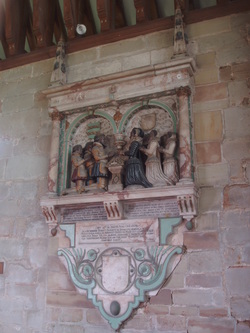
On the north side of the chancel is a colourful wall monument of the Jacobean period to Richard Burdett (d.1603) and his family, formed of the classic male and female groups of small kneeling figures facing each other across a desk composition, seen in so many mural memorials of this era. It is a fine monument in good condition, and much of the colouring appears to be original, though the pale green accents look suspiciously restored.
Below this is a medieval tomb recess containing a carved slab in relief to a medieval priest, but showing only a cross flanked by the Holy Book and a chalice (why is this listed in some sources as a 'defaced 14th century lady' when it very clearly isn't, and never was?!). The cross has cusped decoration and looks as if it may date from the first half of the 14th century.
There are otherwise a couple of plain late Georgian wall tablets on the south side of the chancel, made of slate painted to look like stone.
Below this is a medieval tomb recess containing a carved slab in relief to a medieval priest, but showing only a cross flanked by the Holy Book and a chalice (why is this listed in some sources as a 'defaced 14th century lady' when it very clearly isn't, and never was?!). The cross has cusped decoration and looks as if it may date from the first half of the 14th century.
There are otherwise a couple of plain late Georgian wall tablets on the south side of the chancel, made of slate painted to look like stone.
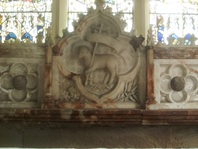
All Saints at Seckington is a rewarding church with a little of everything, in glass, wood and stone. It is certainly worth a visit, though it is normally kept locked. Fortunately it is now kept open on Saturdays at least throughout the year.
Aidan McRae Thomson May 2013
Aidan McRae Thomson May 2013

